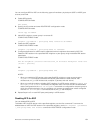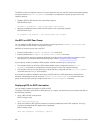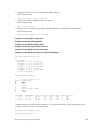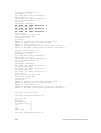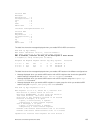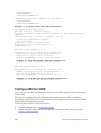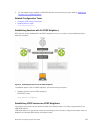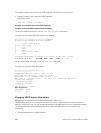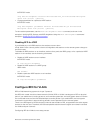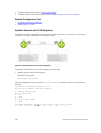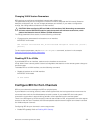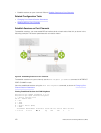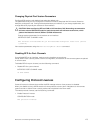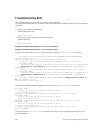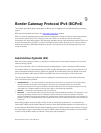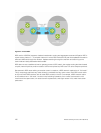
INTERFACE mode
vrrp bfd all-neighbors interval milliseconds min_rx milliseconds multiplier
value role [active | passive]
• Change parameters for a particular VRRP session.
INTERFACE mode
vrrp bfd neighbor ip-address interval milliseconds min_rx milliseconds
multiplier value role [active | passive]
To view session parameters, use the show bfd neighbors detail command, as shown in the
example in
Verifying BFD Sessions with BGP Neighbors Using the show bfd neighbors command
example in Displaying BFD for BGP Information.
Disabling BFD for VRRP
If you disable any or all VRRP sessions, the sessions are torn down.
A final Admin Down control packet is sent to all neighbors and sessions on the remote system change to
the Down state.
To disable all VRRP sessions on an interface, sessions for a particular VRRP group, or for a particular VRRP
session on an interface, use the following commands.
• Disable all VRRP sessions on an interface.
INTERFACE mode
no vrrp bfd all-neighbors
• Disable all VRRP sessions in a VRRP group.
VRRP mode
bfd disable
• Disable a particular VRRP session on an interface.
INTERFACE mode
no vrrp bfd neighbor ip-address
Configure BFD for VLANs
BFD on Dell Networking systems is a Layer 3 protocol.
Use BFD with routed virtual local area networks (VLANs). BFD on VLANs is analogous to BFD on physical
ports. If you enable the no routing protocol, and a remote system fails, the local system does not remove
the connected route until the first failed attempt to send a packet. If you enable BFD, the local system
removes the route when it stops receiving periodic control packets from the remote system.
There is one BFD agent for VLANs and port-channels that resides on RP2, as opposed to the other agents
that are on the line card. Therefore, the 100 total possible sessions that this agent can maintain is shared
for VLANs and port-channels.
Configuring BFD for VLANs is a two-step process:
Bidirectional Forwarding Detection (BFD)
169



